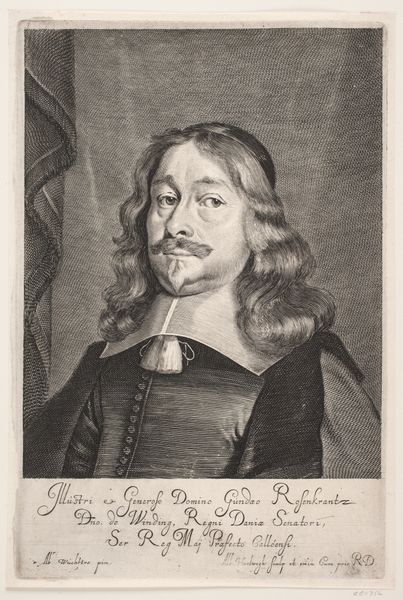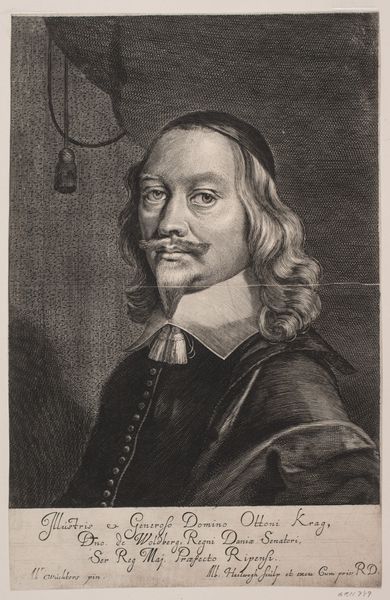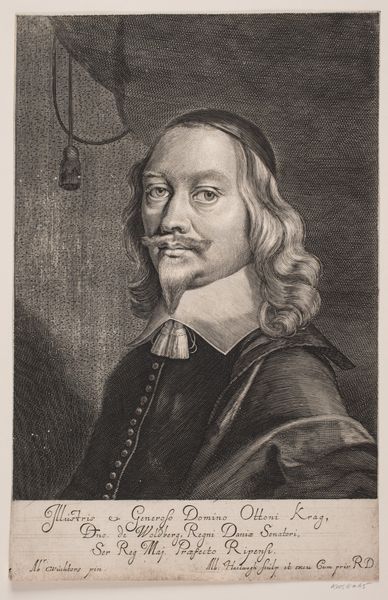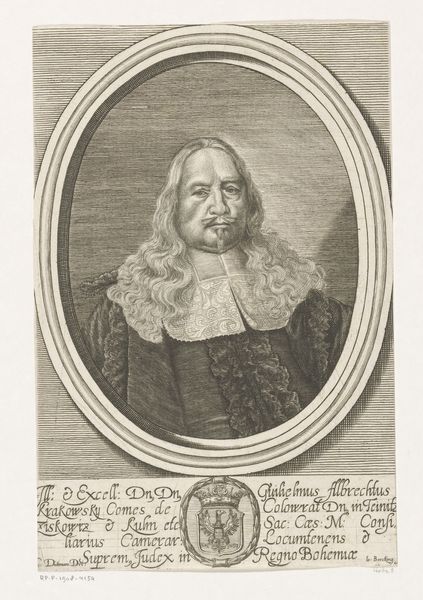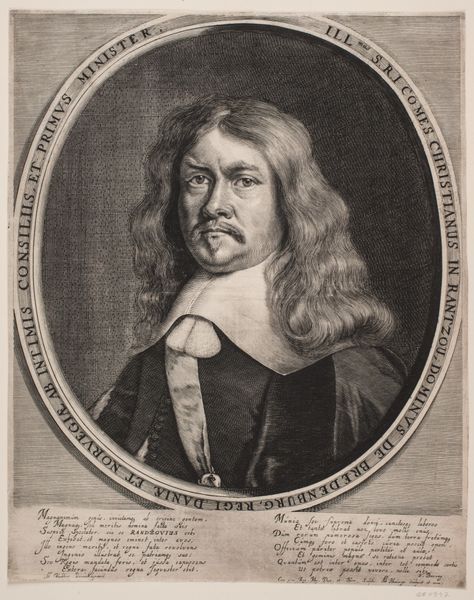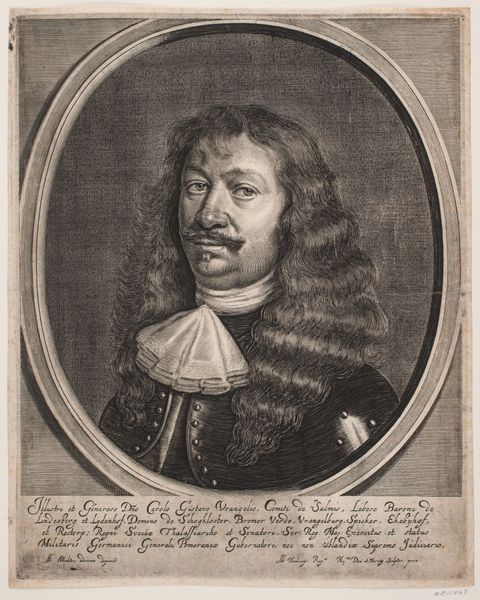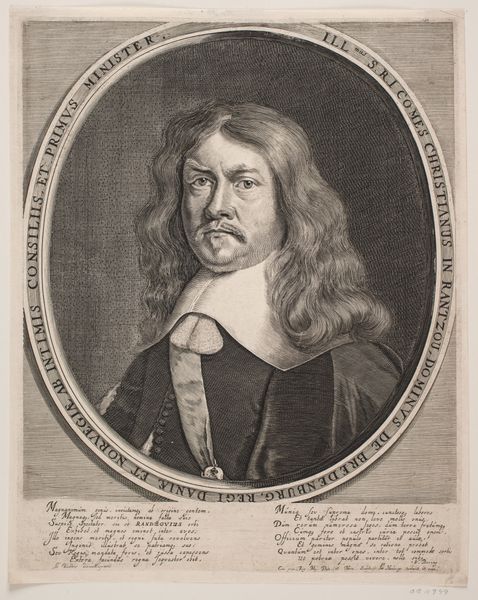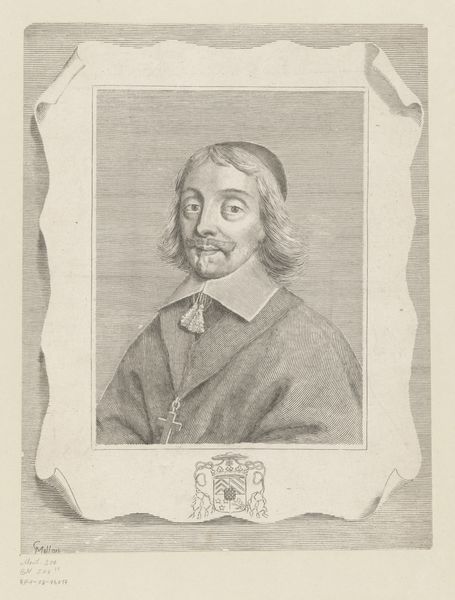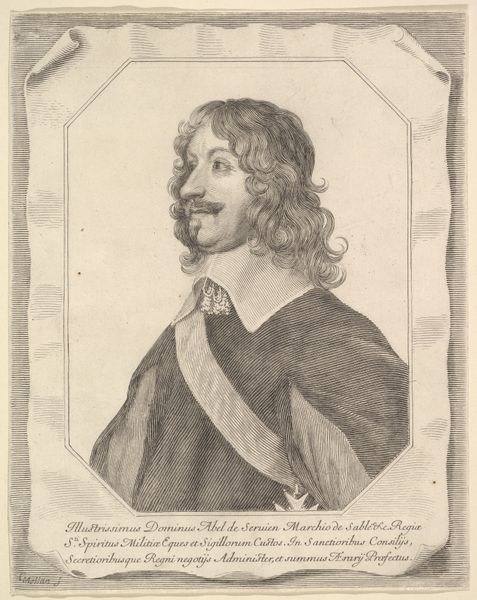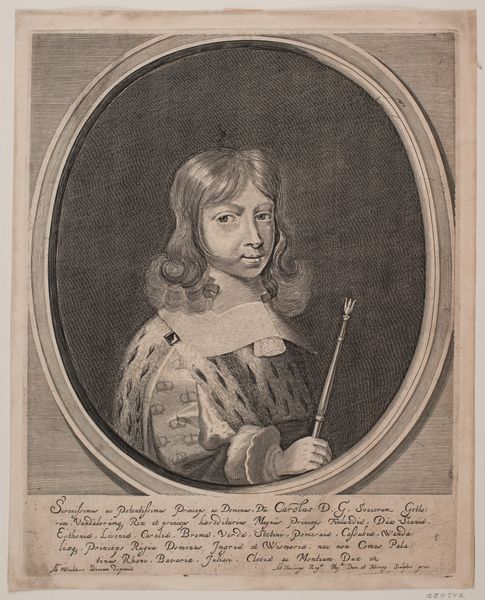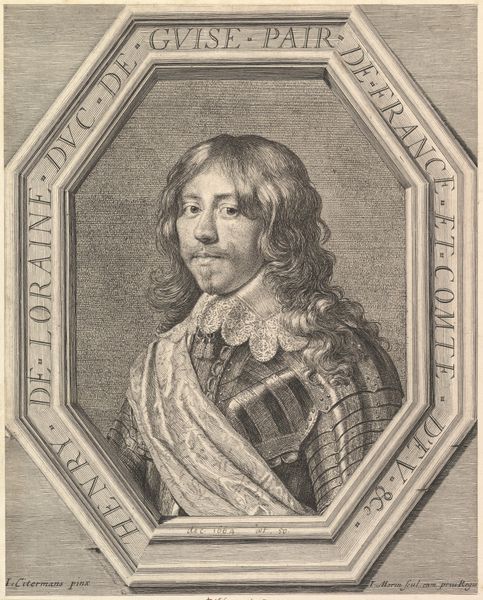
drawing, print, metal, engraving
#
portrait
#
drawing
#
baroque
# print
#
metal
#
portrait drawing
#
engraving
Dimensions: 324 mm (height) x 211 mm (width) (bladmaal)
This is a portrait of Gunde Rosenkrantz, made by Albert Haelwegh sometime in the 17th century. It's an engraving, meaning that the image was incised into a metal plate, likely copper, and then printed onto paper. Look closely and you can see the fine lines that define Rosenkrantz's features, his elaborate hair, and the details of his clothing. The engraver would have used a tool called a burin to carve these lines into the metal. The depth and density of the lines create the illusion of light and shadow, giving the portrait a sense of depth and volume. Engraving was a highly skilled craft, requiring years of training and practice. It was also a relatively slow and labor-intensive process. In its time, it played a crucial role in disseminating images and information. Portraits like these were often commissioned by wealthy patrons as symbols of status and power. It's a reminder that even seemingly simple images can be the product of complex social and economic relationships. Recognizing these relationships helps us to look beyond traditional distinctions between art and craft.
Comments
No comments
Be the first to comment and join the conversation on the ultimate creative platform.
